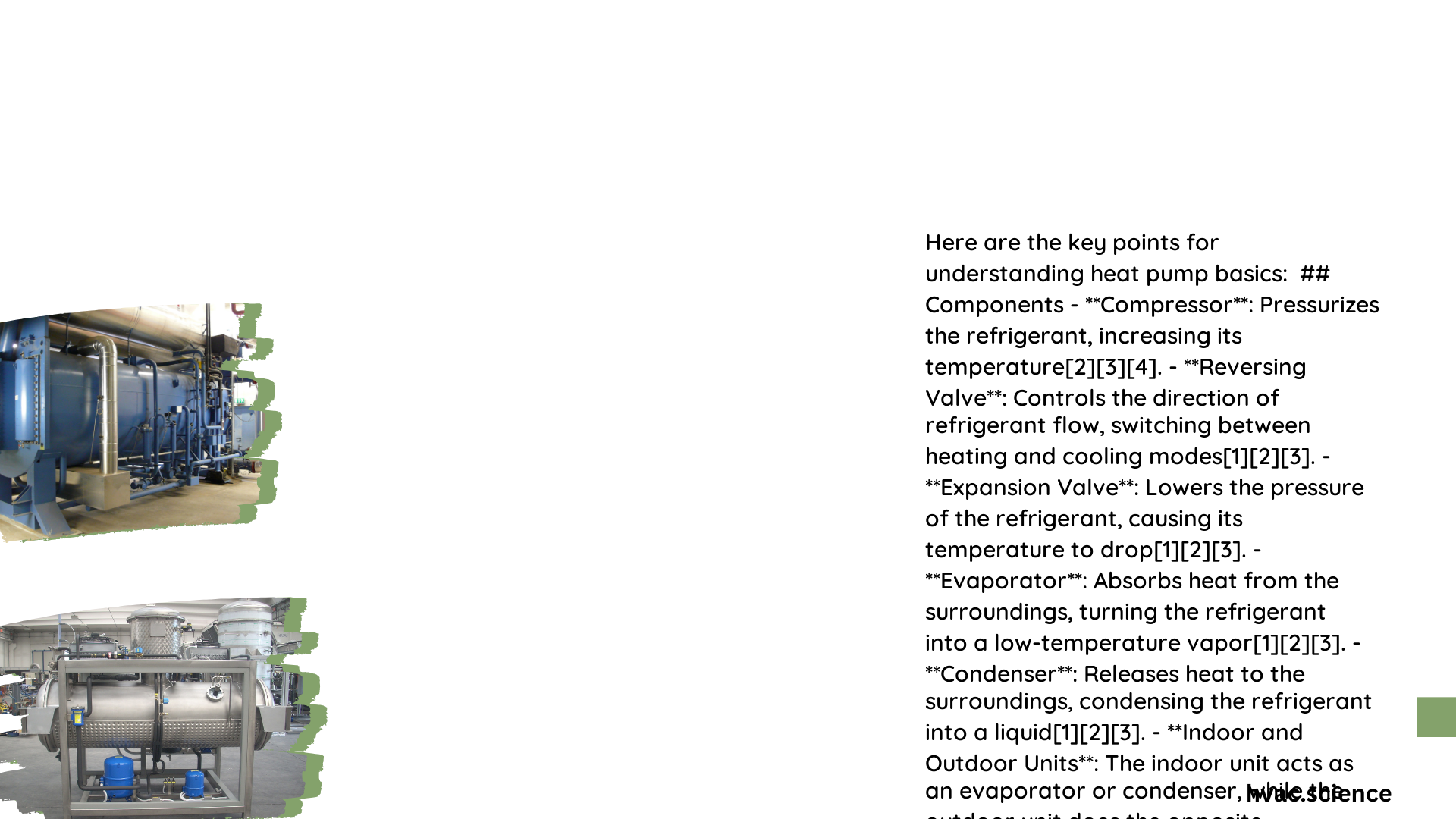Heat pump technology represents a revolutionary approach to home heating and cooling, offering an energy-efficient alternative to traditional HVAC systems. These versatile devices transfer heat between indoor and outdoor environments, providing both warming and cooling capabilities through a sophisticated refrigeration cycle that can dramatically reduce energy consumption and utility costs for homeowners.
What Are Heat Pumps?
Heat pumps are advanced mechanical systems designed to move thermal energy from one location to another using minimal electrical input. Unlike traditional heating systems that generate heat, heat pumps simply transfer existing heat, making them incredibly efficient.
How Do Heat Pumps Work?
The Refrigeration Cycle Explained
The core mechanism of a heat pump involves four primary stages:
- Evaporation: Refrigerant absorbs heat from the source environment
- Compression: Refrigerant is pressurized, increasing its temperature
- Condensation: Heat is released into the target environment
- Expansion: Refrigerant cools and prepares for the next cycle
| Stage | Process | Temperature Change |
|---|---|---|
| Evaporation | Heat Absorption | Decreases |
| Compression | Pressure Increase | Increases |
| Condensation | Heat Release | Decreases |
| Expansion | Pressure Reduction | Decreases |
What Types of Heat Pumps Exist?
Air-Source Heat Pumps
- Most common residential system
- Works by extracting heat from outdoor air
- Suitable for moderate climates
- Lower installation costs
Ground-Source (Geothermal) Heat Pumps
- Utilizes stable underground temperatures
- Higher initial investment
- Extremely energy-efficient
- Works well in diverse climate conditions
Water-Source Heat Pumps
- Uses water bodies as heat exchange medium
- Requires proximity to consistent water source
- High efficiency potential
- Limited geographical applicability
What Components Make Up a Heat Pump?
Key components include:
– Outdoor unit
– Indoor air handler
– Compressor
– Reversing valve
– Expansion valve
– Refrigerant lines
What Factors Determine Heat Pump Efficiency?
Performance Metrics
- SEER (Seasonal Energy Efficiency Ratio)
- Measures cooling efficiency
- Higher ratings indicate better performance
-
Recommended rating: 16 or above
-
HSPF (Heating Seasonal Performance Factor)
- Measures heating efficiency
- Higher ratings mean better winter performance
- Recommended rating: 8.2 or higher
What Should Beginners Know About Installation?
Installation Considerations
- Professional assessment recommended
- Proper sizing crucial for efficiency
- Consider local climate conditions
- Evaluate home’s insulation quality
- Budget for potential electrical upgrades
What Maintenance Do Heat Pumps Require?
Regular Maintenance Checklist
- Clean/replace air filters quarterly
- Annual professional system inspection
- Keep outdoor unit clear of debris
- Check refrigerant levels
- Inspect electrical connections
What Are Potential Cost Savings?
| System Type | Annual Energy Savings | Typical Payback Period |
|---|---|---|
| Air-Source | 30-40% | 5-10 years |
| Geothermal | 50-60% | 7-15 years |
What Challenges Might Beginners Face?
- Initial high installation costs
- Complex technology understanding
- Climate-specific performance variations
- Potential need for supplemental heating
Conclusion

Heat pumps offer an innovative, energy-efficient solution for home temperature control. By understanding their basic principles, types, and operational characteristics, beginners can make informed decisions about implementing this sustainable technology.
